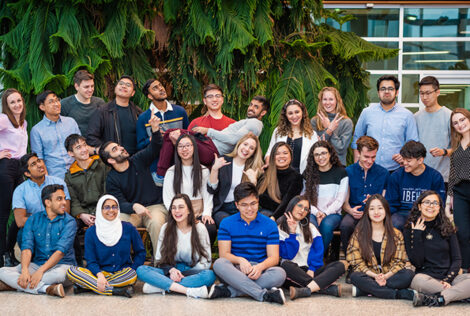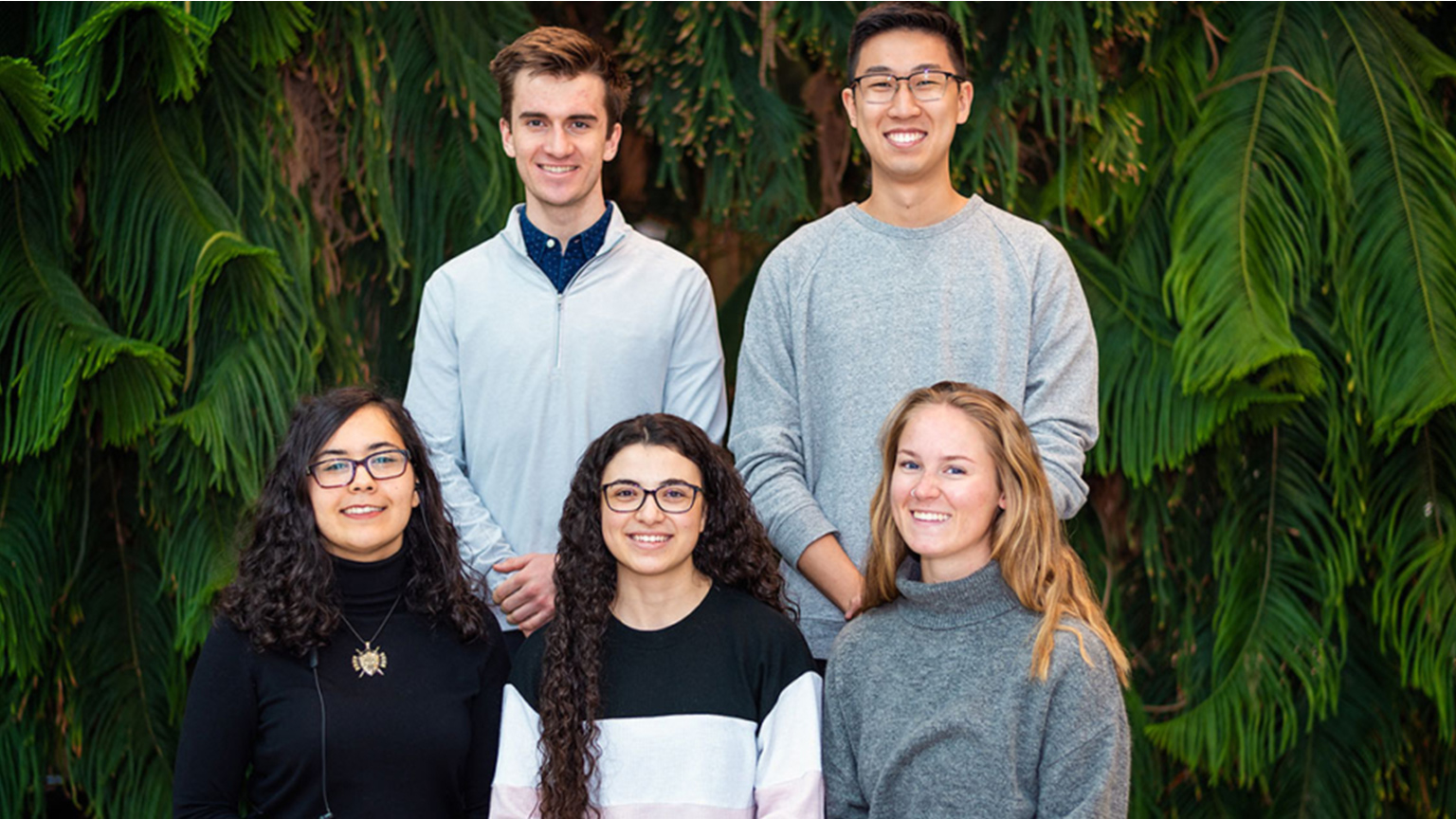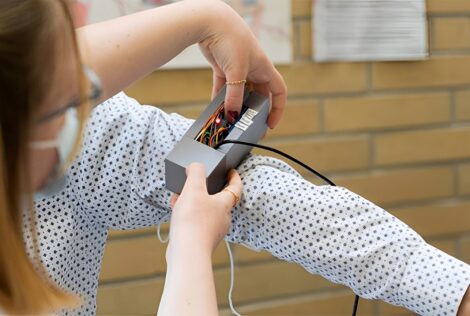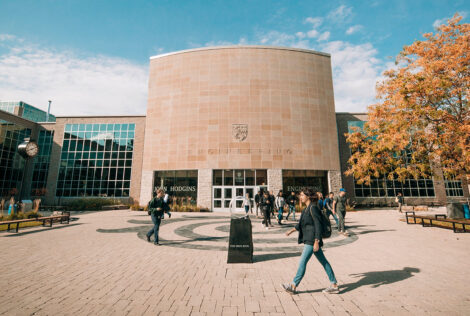

Thinking about HESE? Third-year HESE students talk about their clinical placement at St. Joe’s and what you can expect from iBioMed’s HESE program.
There’s a lot to be excited about when it comes to iBioMed’s Health, Engineering Science and Entrepreneurship (HESE) program.
HESE students, Alexander Drover, Connor Hsu, Lubna Najm, Monica Banayoty and Mackenzie Cullip, talk about everything HESE, from clinical placements, design thinking, career opportunities and more!
What do you think makes HESE unique?
(Lubna Najm)
HESE is unique because we are taught from multiple perspectives, including engineering, entrepreneurship and health science. As such, we gain insight into multiple fields and have a truly integrated approach to tackling relevant healthcare problems. Unlike most programs, HESE also provides more experiential opportunities, from our clinical placements to our engineering projects to the variety of electives available to us.
Describe the HESE community.
(Lubna Najm)
HESE is a community of creative aspiring innovators, each with a passion to help others or leave an impact on the world. Though each one of us has a different career path in mind, in the end, we are all one HESE family who support each other and help one another achieve our goals.
What skillsets do HESE students have?
(Lubna Najm)
HESE students are creative and know how to really target their focus to specific needs that require solutions. We are also able to view problems under different lenses and perspectives, and find unique ways to communicate or ideas to others. HESE students are skilled in interviewing and building empathy with others to assist in the design process.
Tell us about your clinical placement at St. Joe’s.
(Alex Drover)
Our group’s clinical placement is at St. Joseph’s Healthcare Hamilton (SJHH) in the Nephrology Unit. We are working with the Living Kidney Donor Program and more specifically, we are involved in quality improvement of a special “One-Day Donor Clinic” that is being developed here. The typical process for a living kidney donor can take up to a year. The One-Day Donor Clinic is a program that condenses almost all of the testing that a living kidney donor must undergo into a single day. Our job is to identify and act upon opportunities to maximize the efficiency of the program.
What are you learning during this placement and how do you think you will use this in your future careers?
(Alex Drover)
The HESE stream offers students the opportunity to develop many skills in the realm of human-centred design. This placement gives us the chance to apply these skills and realize the impact we can have as biomedical innovators.
How do you feel the HESE program is preparing you for the industry / your future career?
(Connor Hsu)
I feel that HESE has emphasized the importance of adaptable and non-linear thinking. Much of our project work is subject to the rapid application of new knowledge. For example, many of our design projects are open-ended and allow us to define our own learning objectives within a given context. The use of empathy and qualitative research methods allows us to gain an understanding of a healthcare problem from the perspective of individual experiences; this in turn allows us to develop the ability to define a problem and develop solutions from the ground up. I feel that I have been prepared by learning “traditional” course subjects, but the ability to apply learned content in impactful design projects has allowed me to expand my creativity, problem solving, and critical thinking skills.
Complete this sentence: HESE is a great program choice for those interested in…
(Connor Hsu)
HESE is a great program choice for those interested in integrating creativity with a learned knowledge in health sciences, engineering and entrepreneurship. HESE has really pushed the envelope in learning and applying the design thinking process in the health context. The opportunity to apply creative thinking in healthcare solutions has been wonderful for my own learning; through HESE, you are able to not only learn theory, but to actively apply it in real-life settings and learn through experience.
Describe courses specific to HESE and what students can expect.
(Mackenzie Cullip)
IBEHS 2E06 has a strong focus on the early stages of design thinking. Over the year, our two projects focused on creative confidence and influencing decisions. Both frameworks relied on interviewing users, understanding the root problem, and forming needs statements. We also use a LOT of sticky notes to brainstorm and organize ideas.
IBEHS 3E06 puts the theory to practice in clinical settings. After a semester of virtual immersion and identifying clinical improvements, your group is paired with a preceptor in a clinical area. For example, our group is working on clinic flow and quality improvement in a kidney donation clinic at St. Joseph’s Hospital. We also dabble in idea pitching and intellectual property.
Want to learn more?


